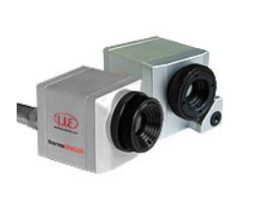Temperature is arguably the most critical measurement parameter in the plastic injection molding process. In fact, consistently high-quality production can only be attained through precise temperature control.
But traditional measurement techniques involved actual contact between the sensor and the part whose temperature was to be taken. There were a number of drawbacks to this method, not least of which was that the sensor could only detect the temperature for the precise location where it made contact. Another drawback was sensor durability: making direct contact with a super-hot plastic injection molding component takes its toll on these “thermometers.”
The answer to these issues are non-contact, infrared temperature sensors which involve infrared cameras for broad-based temperature monitoring and “pyrometers” for pinpoint measurements. In the plastic injection molding industry, non-contact infrared measurement technology has several advantages:
- ability to detect extremely hot parts quickly, and without disrupting work flow or damaging the sensor
- ability to measure temperature of objects that are difficult to access
- ability to measure temperature of parts that move extremely quickly
- ability to measure temperature extremely quickly, and make adjustments to machinery equally quickly
Most infrared measurement systems are appropriate for a broad range of applications, from cold (pre-packaged frozen foods) to blazing hot (molten metals). Depending on the product, they can detect a temperature range from −40 °F to +3992 °F. Detecting these values in real time means other process parameters can be adjusted in real time to ensure high product quality and avoiding unnecessary rejects. Infrared temperature sensors are available with different wavelengths, enabling measurement of temperatures of products ranging from very thin plastic films to thick-walled plastic parts.
How does infrared temperature measurement work? Everything in the universe with a temperature above absolute zero ( −273.15 °C ) emits electromagnetic radiation proportional to its own temperature on the surface (which is called “intrinsic radiation”) regardless of whether the object is solid ice or molten steel. Infrared radiation forms a part of this “intrinsic radiation” and can be used for temperature measurements when it is focused onto a detector element with the help of a lens (input optics). This generates an electrical signal proportional to the radiation. The signal is then amplified, digitally converted, then transformed into an output size which reflects the temperature of the object. This temperature can be shown on a display or output as an analog or digital signal, which thus can be used to monitor and adjust easy connection to process control systems.
